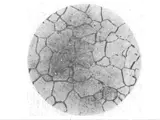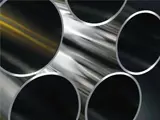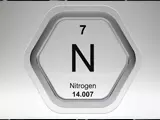Effect of Chemical Composition on Low Alloy Steel Properties and Characteristics
Steel is a versatile alloy comprising a combination of elements present in varying amounts and proportions. The composition of the alloy used can have a significant effect on the properties and characteristics of the resulting steel. Low alloy steels, for example, are a type of alloy which contains a lower proportion of alloying elements compared to other steels. By properly considering the range of alloy elements available and their amounts, the properties and characteristics of steel can be tailored to meet specific applications. In this article, the effect of chemical composition on the properties and characteristics of low alloy steel will be discussed.
Low alloy steels contain small percentages of alloying elements, such as molybdenum and chromium, compared to other steels. These alloying elements offer a variety of benefits, which are dependent on their individual properties as well as their amount within the steel. The molybdenum alloying element, for example, offers improved resistance to corrosion, higher temperature strength and added strength at elevated temperatures, while chromium offers good ductility, improved machinability and oxidation resistance. As the amount of the alloying element increases, the relative effect on the properties and characteristics of the steel may also increase.
The other elements present in low alloy steels can also have an effect on their properties and characteristics. Carbon is an essential alloying element and its properties and characteristics are greatly affected by the amount of carbon present in the steel. A higher carbon content, for example, can increase the strength and hardness of the steel, while a lower carbon content can reduce overall strength but improve the weldability of the steel. The effect of silicon and manganese on steel is also important and can affect the overall strength and ductility of the steel.
Apart from strength, the combination of alloying elements in the steel can also have an effect on its other properties and characteristics. The presence of nickel, for example, can improve the corrosion and oxidation resistance of the steel, while molybdenum and chromium can improve its resistance to high temperature strength. The presence of elements like vanadium and tungsten can further improve the wear resistance of the steel.
The mechanical and thermal properties of steel, such as tensile strength, yield strength, ductility, thermal conductivity and modulus of elasticity are also affected by the chemical composition of the steel. An increase of alloy elements such as chromium and molybdenum can improve the mechanical and thermal properties of the steel, while increased amounts of elements such as carbon and silicon can reduce these properties.
Finally, the chemical composition of low alloy steel can also affect its microstructure. The microstructure of the steel contains information about its properties, characteristics and potential applications, which can be determined by observing its grain size and composition. The composition of the microstructure can be adjusted by altering the alloying elements in the steel to achieve specific levels of strength and corrosion or wear resistance.
In conclusion, the chemical composition of low alloy steels has a significant effect on their properties and characteristics. The presence of various alloying elements, including molybdenum, chromium and carbon, can influence the strength, ductility, corrosion resistance and other properties of the steel. By combining the right amounts of alloying elements and adjusting the microstructure of the steel, the desired properties and characteristics can be achieved in order to meet specific applications.








